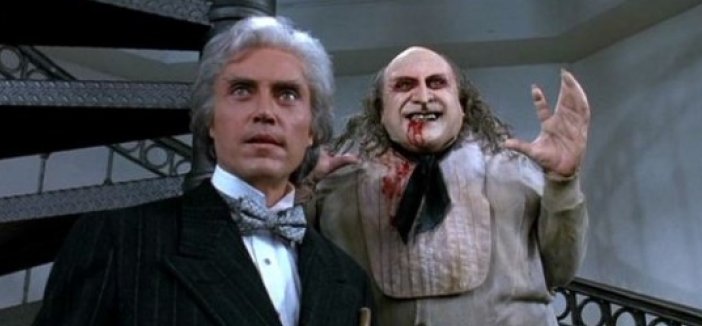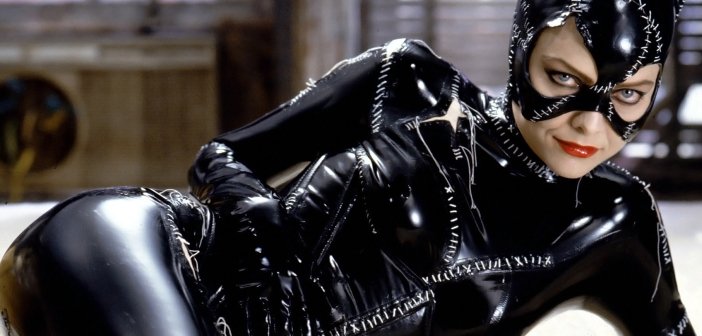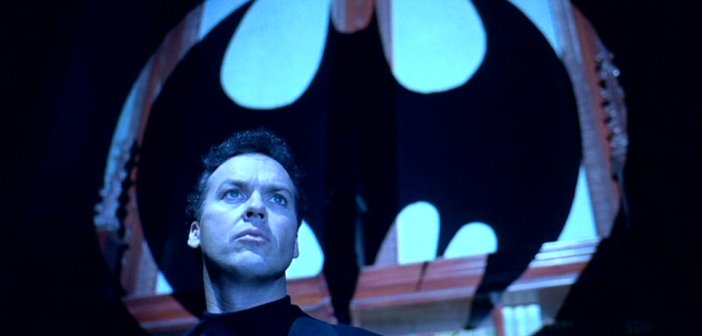Batman Returns | How Does Tim Burton’s Vision Hold Up After 25 Years?
The enormous success of the first film (the appropriately titled Batman) meant that Tim Burton had something of a bargaining chip in his corner when Warner Brothers asked him to come back for the sophomore effort. He argued for more creative control, free from the armies of execs and hanger-ons who had their own ideas as to what the world of Gotham should entail. With no interest in a true sequel, he wanted simply to dive back into Gotham and tell a story wherein Batman happened to be one of the main characters, rather than the clear driving force of the film.
Thus Batman Returns, was born. It’s a uniquely different film from its predecessor, abandoning many of the elements that made Batman (1989) so charming (where’s Robert Wuhl?) and there are times where the film doesn’t appear to be very interested in being a Batman film at all – a large part of the reason why I disliked the film for many years. What surprised me watching it 25 years after its release is that Batman does still play a central role in the psychology of the film (even if he is often absent) and many of the film’s elements make for a stronger experience than an awful lot of modern superhero epics. For better or worse – it truly is a Tim Burton film, true to the aesthetic and the style of that director in a way that perhaps Batman was not.
Straight away it’s clear that Gotham is no longer the vast, hyper-industrialised punk paradise hellhole it was in the first film (for which production designer Anton Furst deservedly won an Academy Award). In Batman Returns, designer Bo Welch created something that harnessed German expressionism (shots from films like The Cabinet of Dr. Caligari are referenced directly) to create something far more sleek and cold (fitting for the film’s Yuletide setting) but sadly less impressive. Filmed entirely inside an LA soundstage (instead of the exterior-based sets of rainy Pinewood Studios), the film lacks the scale of the haunting cityscape of the first film. Streets are more cramped, buildings don’t seem that tall, actors and scenes seem floodlit and in 2017, it all feels a bit too much like an episode of Arrow as opposed to something grand enough for a Batman film.

The cast, while crowded, works for the ensemble-feel of the film. For better or worse, Maximilian Shreck is one of the definitive Christopher Walken characters. Named after Nosferatu actor Max Schreck due to his vampiric nature (metaphorical of course, we’ve yet to see a film where Batman fights the undead), Walken drinks up scenery from his very first scene, where he insists to Michael Murphy’s beleaguered mayor that Gotham is in desperate need of a “Powah plant!” (which he secretly plans to use to suck power from the main grid rather than providing it). Unlike the real life New York businessman on whom Max’s wheeling and dealing is clearly based, it’s not Shreck who dives into the world of politics to get what he wants – he manages to convince the Penguin to do that for him by running for mayor (a concept curiously similar to an episode of the 1966 TV series).
Chief among the deviations from the Batman mythos is the Penguin himself, albeit understandably so. Arguably the central villain in a film teeming with them – Burton took his short stature, stocky features and avian resemblance (which was at best a passing curiosity in the comics) and dialled it all up to eleventy stupid. Unlike the croaky-voiced dandy played by Burgess Meredith in the TV show, Danny DeVito’s Oswald Cobblepot is an obese monster with flippers for hands, a hawk-like nose and an abandonment complex that makes his blood run cold. While he’s probably closer in concept to Killer Croc than he is to the Penguin, DeVito acquits himself well in a role that requires him to play the dual role of Oswald the mover and shaker and the snarling, odiously perverted Penguin. Unlike the Joker, Penguin is never a moustache-twirler – it’s always clear Burton is most interested in him as a creature of tragic horror (his appearance draws comparisons to classic Lon Chaney monsters like the hypnotist in London After Midnight). While his motivations are ultimately sinister, you do feel for him.

Like Nicholson before her, Michelle Pfeiffer’s Catwoman requires mere minutes of screentime before she becomes completely iconic and the highlight of the film. Unlike the Catwoman of the comics who was more of a petty thief, this film casts Selina Kyle as an unhinged feminist fatale – crusading against contemporary chauvinism in the same way that Batman wages war on crime. Trodden on by her cruel employer, she is driven over the deep end by the constant reminders of patriarchal oppression in her life (her new boyfriend dumps her because he thinks she’s his ‘appendage’, her answering machine is clogged up with automated ads for perfume that will supposedly help her seduce her boss). In a moment that eerily forecasts Internet Neckbeards, there’s a scene later on in the film where the Penguin tries to kill Catwoman after she dismisses his advances – he claims that she “gave out all the signals”. While there is certainly plenty of male gaze that goes with her character (and as my girlfriend pointed out, she does still wear totally impractical heels), it is an unusually rounded character who is given agency outside of being a love interest or a supervillain.
While Michael Keaton’s Batman is only as important as the other characters in this film, when he is onscreen, he exudes screen magic and proves why he’s one of the greatest examples of how casting off-type can pay off so well. Michael Keaton as Batman was the kind of edgy idea that rightfully infuriates fans because it drives them wildly out of their comfort zone. How could this wiry-haired little shrimp ever embody the gravitas of the Dark Knight? Because he’s an incredible actor, that’s how. Unlike many of his more able-bodied successors, Keaton’s performance as Batman relies heavily on his ability to underplay a line and play the character as if he were flesh and blood, as opposed to spouting out reams and reams of comic book dialogue (a medium that doesn’t have the luxury of an acting performance where so much can be said with a glance or an intonation). I’ve read multiple scripts for the first two Batman films and it’s clear that the screenwriters had a far more flowery-spoken protagonist in mind than what Keaton eventually delivered – thank God then that Burton decided to allow Keaton to scale it all down (a shame George Clooney never thought to do this). It also helps that he has the most Batman-like eyebrows of all time.

He wisely played Bruce Wayne as a man so utterly obsessed by his strange mission that he didn’t really know how to do anything else – while he can hold his own in a boardroom with a monster like Max Shreck, as soon as the disarmingly beautiful Selina Kyle walks into the room, he forgets his own name, how to pick up a jacket and how to form basic sentence structure (“I mistook me for someone else!”). While Burton himself has argued that the film isn’t a sequel, Bruce repeatedly reminds us that it is, by repeatedly referencing Kim Basinger’s Vicki Vale, with whom we gather his romantic relationship is now over. If his relationship with Vale was about learning that he could be happy even in the nightmare life he has chosen for himself, his kinship with Selina seems to be about learning what kind of partner he’d really like to spend his life with (which unfortunately, is someone even more psychologically unhinged and downright dangerous than him). The film has an impressively adult psychological complexity to it (no, really) in a way that Batman Forever (much as I love it) largely jettisoned in favour of simpler heroism and romance – with that in mind, it makes sense why Keaton chose to bow out after this film.
That’s not to say that I’ve suddenly discovered the film to be perfect. It’s loaded with inky black comedy that’s as campy as anything on the Adam West series (just covered in grime) and when juxtaposed with the more serious, violent or even sexual moments in the film, you find yourself asking who the film’s audience is even supposed to be (Burton has recalled that part of why he wasn’t asked to do a third Batman film is because he pissed off McDonalds – “What’s that black stuff coming out of Penguin’s mouth? We can’t sell Happy Meals with that!”). It’s also hard not to be irritated by the Bat-body-count in this film (Batman is staunchly non-lethal in most of his other iterations). That being said, while Batman does take numerous lives throughout the film, it happens in such pantomime ways, it’s hard to really take issue with it – the classic example of this is Batman attaching a timebomb (complete with old-timey alarm clock and sticks of dynamite) to a goon’s chest. The scene cuts to a shot of Batman walking around the corner as we hear a small explosion and a Looney Tunes “Ooof!” from the goon. As a kid, I always pictured the goon still very much alive, covered in soot, like Wile E. Coyote standing outside an exploded ACME factory. I personally don’t find Batfleck branding child predators or shooting paramilitaries in the face with a handgun quite as much of an achievement in silly popcorn entertainment.
The film’s finale is a spectacular crescendo of nonsense that is just silly as anything from the 60s series and arguably even more ridiculous than anything in the two Joel Schumacher films. It’s amusing that people consider this film to be so dark and gritty, when the third act has Batman diverting an army of rocket-firing penguins. Nonetheless, having scoffed at Batman Returns for being bloated and overrated for so many years, I have to concede that 25 years later, it has actually aged like a fine wine. While it’s not always as nice to look at and doesn’t have as much Batman as we’d all like, it’s darkly fun, it has some fantastic performances, a wonderfully relevant streak of equality and leaves you with a little more to think about than the usual superhero film. And I never even mentioned the masterful Danny Elfman score. Bat’s all folks.

